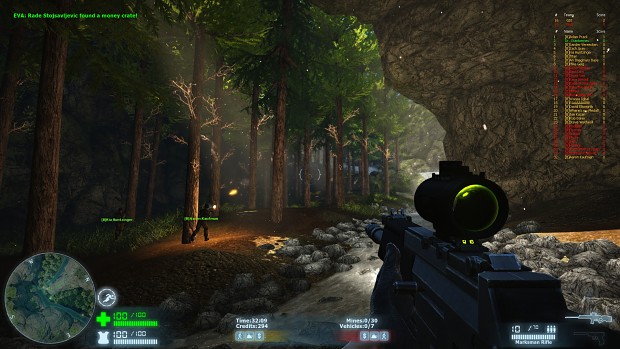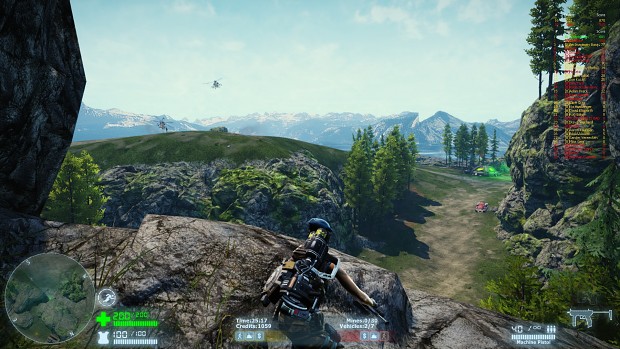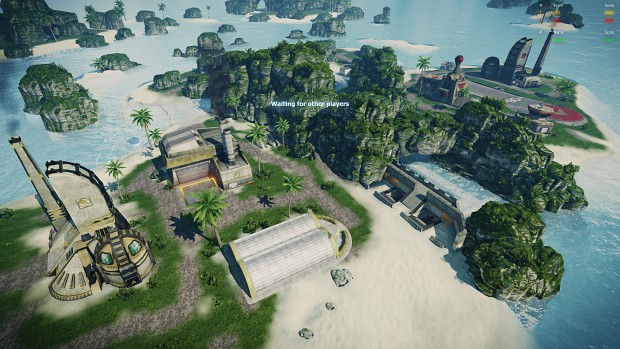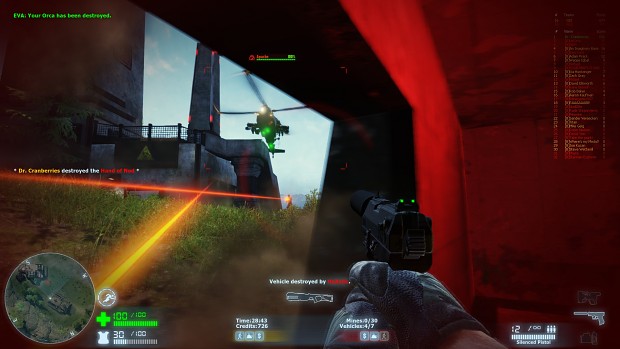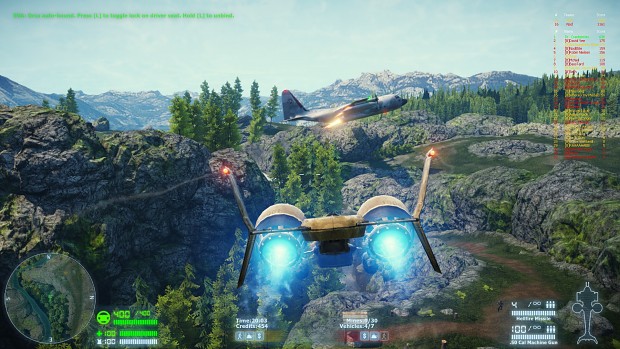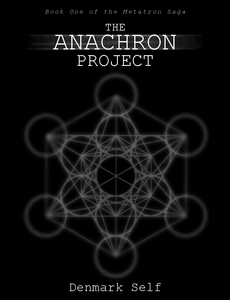ABJECT_SELF
Jonathan joined
I'm just a guy who grew up playing too many video games and listening to too much metal. Hoping to be a writer, actor or software programmer, whichever I suck at least.
The rumble of gunfire and artillery bursts fades into the background as I make my way alone towards the enemy base. I hide behind a boulder, watching the shadows of passing Apaches and transport helicopters, either which could spell my doom if they so much as glance at me. I check up on my team's status before moving ahead. It's not looking good: We're 1500 points behind and just lost a refinery, with NOD still pounding my base. With funds running dry, this could be my last shot at making a difference.
With the coast clear, I rush from the boulder to the tunnel, then to another rock just outside NOD's front door. The base itself looks quiet. At least 15 out of their 20 players are busy trying to break into GDI territory. The silence is crushed by the grinding engine erupting to my right. A GDI APC managed to break past the siege, halfway dead, with at least 3 teammates inside. The APC careens past me through the base entrance, welcomed by a waiting NOD tank. The APC's driver lets his minigun rip, but the wounded transport stands no chance against a fresh tank. I watch the fight from the shadows, repair gun in hand. I could run out from cover, heal the APC and give my teammates a fighting chance. Or, I could use the tank brawl as a distraction to sneak into the base undetected.
I take out my silenced pistol and dash into the base, just as the APC explodes. The kill list fills with my teammates' names as I enter the power plant. I cover the plant's core in C4, and spend the next long 30 seconds waiting in silence, my heart pounding as the timer on the bombs creeps closer to 0.
Renegade X is a rare occurrence: a fan-made total conversion mod that not only made its way to a playable state, but hit all the notes it set out for and then some. Developed by Totem Arts, the now-standalone Unreal Engine game is a revival of one of the lesser-known C&C games, Command & Conquer: Renegade. Like the 2002 original game, Renegade X consists of a passable single-player campaign (available as separate download) and an incredible multiplayer mode, though this time the multiplayer is put front-and-center, and for the better.
A confession: I do have a sort of bias here, as C&C: Renegade was one of my favorite games of all time. The idea of playing as a single unit in the backdrop of Westwood's epic Command & Conquer universe was irresistible, and Renegade delivered on that premise in all the ways that mattered, featuring a Thanksgiving's feast of weapons and vehicles set in some of the largest single-player maps any FPS had seen at that point (some stages could take 90+ minutes to complete). The real treat, however, was the online multiplayer. Released at the dawn of DSL internet, this was the first internet game I ever got working, and the sensation of taking part in massive skirmishes against enemy bases never got old. Sadly, the game itself did.
When EA purchased, and later liquidated, Westwood Interactive, Renegade became much more difficult to play. Official websites closed, logins failed and servers went offline within half a decade of Renegade's release. An extremely dedicated community fought hard to keep the online component alive, developing workarounds to the login barrier and even setting up their own anti-cheat client. But by 2010 the loopholes required to get Renegade running online, nevermind on a modern system, were too much for any but the most rabid C&C fans. And rabid we were, as no other game out there was even trying to do what Renegade did. We were left starving, alone and forgotten, doomed to become another casualty of an EA acquisition.
Miraculously, some of those old Renegade fans were both smart enough to see the game's slow death coming, and crazy enough to do something about it. For almost a decade they've been working on rebuilding Renegade from scratch in the Unreal Engine. They could have settled with a "spiritual successor" or just an HD remaster, but they didn't stop there. Renegade X has every bit of content the original $50 game had and then some. In fact, this game has more content available in beta than most AAA online games have at launch, without charging you a dime. It's visually breathtaking, intellectually challenging, and viscerally satisfying.
At first glance, Renegade X looks like a mix between Battlefield and Team Fortress. Two teams, NOD and GDI, must destroy all the buildings in the opposing team's base while defending their own. To accomplish this, they have a choice of infantry units, vehicles, tanks, air units, air strikes, nuclear weapons and even an orbital satellite cannon. With the exception of the occasional Tiberium silo, there are no control points to capture or barriers to unlock along the way, there is simply a goal to get to by any means that must be destroyed any way possible. This is where Renegade X invites both careful tactical thought and all-out insane brawling, often at the same time.
"This game has more content available in beta than most AAA online games have at launch."
The key is variety. Each team has more than 10 infantry classes and 7 vehicle types, completely unique to their own faction and serving different roles on the battlefield. GDI has most of the hard-hitting rocket launcher units and massive tanks for brutal sieges, while NOD has high-tech stealth units and vehicles meant to strike with quick precision. While each infantry unit is highly specialized, there's nothing stopping an engineer from going on the offensive or a sniper defending a base from advancing helicopters. How you use each class's strengths is up to you, and there's plenty of room to get creative.
Despite the huge differences between the factions, the teams are evenly balanced at the start of the game. Your objective is to upset that balance by whittling away at the enemy's resources until you can overtake their base. Every building destroyed is a major blow to either force. Lose the Tiberium refinery, and you lose your main source of income. Lose a power plant, and all units and vehicles cost double. And heaven help you if your barracks or vehicle factory goes, since that means no more specialized units for the rest of the game. Even if you lose some buildings (and you will) your team still has means to compensate for their weaknesses. In fact I've seen teams get knocked down to just one remaining structure and still come back to win the game.
While the scale of the structures in each base is impressive, most of the maps are actually quite small. Often the NOD and GDI bases are right next to each other, separated by a rocky cliff or rolling hill with a long path going around. This brevity actually works in the game's favor, as tanks and infantry don't have far to go to find something to shoot at and front lines can shift quickly from one base to the other. Most of the maps do have a noticeable "MOBA" formula going on, a main lane between the bases with one or two side paths. It can be a little disappointing to jump into a new map and realize after ten minutes that you've seen all it has to offer, but you'll be thankful for the simplicity when trying to find ways to stop a line of Mammoth tanks from bulldozing your base.
"I've seen teams get knocked down to just one remaining structure and still come back to win the game."
Making progress in Renegade X at any distance depends enormously on teamwork, and this can be hit-or-miss. There are no assigned commanders or formal team structure, so it's entirely up to players how to organize their team, which can result in either clever and precise tactics or total anarchy. The team to organize effectively first is usually the victor. Sadly, there's no in-game VOIP and never will be, so player communication depends on memorizing pre-designated command keys for simple things like "I need repairs!" (or the ever-popular "Don't get in my way!") and typing in chat. You can't really blame a non-profit developer for not being able to implement voice chat, but it's hard not to notice how much better Renegade X would be with it.
When you do get a coordinated team in a full server and all of the elements come together, Renegade X has some genuine Normandy Beach moments. Tanks pummel each other endlessly, kept alive by engineers frantically running through the shrapnel. The battle can turn just from one sniper taking out a tank's engineer, or an airstrike on the front line, or a stealth unit planting a nuke in your base while you're away. Every move you make during a pitched battle, whether attacking or defending, can make or break your entire team, and the tension of fending off a massive assault or taking part in an APC rush into enemy territory is enough to leave your hands shaking, and your fist pumping in the air when a plan actually comes together. Winning is an addictive experience that will have you coming back for the thrill of C4ing an enemy MCT, hijacking an abandoned flame tank or watching your ion cannon take out the Airstrip.
Other times, you'll be cursing the symptoms of Renegade X's relative obscurity. At the time of this writing, there are only a few servers with anybody playing on them. Peak hours are normally in the evening, but when a server loses players the game can die quickly. You're also at the mercy of whichever server is actually populated at the time, so better not do anything to get banned. When nobody else is playing, you can still run single-player skirmishes using bot teams. It's a nice feature that the original Renegade was sorely missing, but the AI in Renegade X never attempts any complex tactics like APC rushes or bombing MCTs (actually it behaves a lot like the AI in the original Command & Conquer) and is horrible at driving anything.
And this is the awkward situation Renegade X finds itself in. Totem Arts has created a unique, well-crafted multiplayer experience that it absolutely cannot sell or profit from, due to the legalities of C&C's ownership. They can't run paid ads on other websites and have barely gotten recognition from major gaming news outlets. Most of the people who know it exists are former C&C: Renegade players, many of which are still just playing the original game. In fact there's probably more people involved in developing Renegade X than actively playing it in a day.
There was another freeware game that ambitiously revived a lost franchise better than anyone could have expected. Its name was MechWarrior: Living Legends. Though the Crysis-based game enjoyed immense popularity with BattleTech fans, development on the game was unexpectedly shut down when the current holders of the MechWarrior IP ordered a cease-and-desist. Totem Arts is in the same grey area of fan dedication and IP ownership, and while EA has so far given them their blessing to continue work on Renegade X, this could change if the game starts to steal any thunder from EA's current franchises.
"There's probably more people involved in developing Renegade X than actively playing it."
Renegade X deserves to be played more. To recreate a game lost to time is one thing, to actually improve upon it in almost every way is monumental. The endless vehicular stalemates that plagued C&C: Renegade are all but gone. The new weapons and abilities open the doors for new tactics even after years of flame rushes and harvy walking. This is by no means a perfect game, especially with some dull weapons and bizarre vehicle physics thrown into the mix, but it fully accomplishes what it sets out to do, and the result is a freeware game that feels more complete than many of the for-profit free-to-play games on the market today.
It's both refreshing and a little concerning that absolutely everybody has an opinion on paid mods. As tumultuous as this April has been for pretty much everybody in the world, from Nepal to Baltimore to Steam users, it seems the most voracious topic of the month has been Valve's implementation, and sudden retraction, of paid mods for Skyrim. The debate has at least brought to light just how important mods are to the PC audience.
INtense's article currently on MODDB's front page pretty much summed up everything Valve did right and wrong. The concept of paid mods itself isn't evil, in fact it could be brilliant, but introducing them to a game community that's already existed on the free medium for years was a terrible idea. It would have gone down like Hernan Cortez bringing Christianity to the Aztecs.
"If the customer is always right, how can they accept something they disagree with?"
But I think one major reason paid mods drew such a strong reaction is that the gaming community is fed up with feeling like they've lost control of their own market. In the past 5 years, gamers have had to deal with the overwhelming torrent of publisher policies such as day-one DLC, always-on connectivity, season passes, microtransactions, preorder bonuses and forced account registrations. These are all concepts that are extremely unpopular with the consumer yet are sprouting up everywhere. Industry leaders say this kind of post-release monetization is something gamers just have to get used to, but that doesn't compute in the traditional market sense: If the customer is always right, how can they accept something they disagree with?
The problem is that the entire digital software and electronics market, not just gaming, has flipped the rules on the consumer. Don't want to accept that new iTunes EULA? No worries, just can't use your iPhone anymore. Don't like Facebook's new privacy policy? MySpace is that- oh wait it's gone. Don't want to pay for that new assault rifle in COD? Prepare to lose repeatedly to the guy who bought it. This is why Garry Newman's argument that the market will balance itself (while true when he made his success ten years ago) is sadly flawed: Digital markets now work on coercing the consumer to follow the publisher's direction by ensuring they have no adequate alternatives. Apply that logic to mods, and things start to look scary.
"Digital markets now work on coercing the consumer to follow the publisher's direction by ensuring they have no adequate alternatives."
Now, I trust Valve and Bethesda with mods. Bethesda is the reason I got into modding in the first place. The problem is when other companies adopt a paid-mod marketplace. EA and Activision, two companies that have been notoriously hostile to modders, could very quickly open their doors to modding, which would be great. However, if these publishers start earning income from paid mods, then any site hosting free mods suddenly becomes a competitor. I could see them taking action against sites like MODDB or the Nexus and modders who release their content for no charge. As it stands, modders operate in a legal grey area and their work exists at the mercy of whoever holds the rights to the game they're built on. One cease-and-desist notice is all it takes to halt months, even years, of nonprofit work on a mod.
This month brought modders dangerously close to the threat, and potential, of capitalism. With Valve and Bethesda reversing their policy, many are breathing a sigh of relief, but it's clear the debate hasn't ended. Valve is going to do exactly what made them into software giants: They're going to back to the drawing board, beat themselves up over where they failed, relentlessly fix the flaws in their design and come back with something everybody can appreciate (or at least tolerate). Then other publishers will copy their move. We can fully expect paid mods to become a reality within the next 2-3 years. Whether or not that's a good thing will come down to how much gamers have a say in it. I hope that when they do come, they exist in a market where paid mods are priced fairly and free mods will continue to be made with passion. Hell, I'd gladly produce both free and paid mods in such a system. But like many gamers, I don't trust the market to be fair and balanced anymore.
And without further ado, here's the weekly music video.

Now that July Anarchy Prologue REMIX is finally released, here's a track to get fired up to!
Wow, didn't take long for me to fall behind. Been busy with July Anarchy Prologue I guess.
This video is shot beautifully, but I mostly love it for being a rap song with a two-minute guitar solo.
EDIT: Posting two artists from Japan back-to-back was complete accident BTW.
I think I'm just going to post one music video a week here until I find something else to talk about, partly to keep me from going on any more year-long exiles from this site.
Here's one band I stumbled upon from Japan, LOKA. From what I've listened to they can be pretty hit-or-miss, but when they're good, they're really good.
Excerpt from my NaNoWriMo novel
THE ANACHRON PROJECT
Where a man walks, he brings his entire life with him. This is an adage born somewhere in China, then through literature or accident brought to Europe until an eroded form found its way onto American soil, yet the saying has always held a core truth. Wherever a person stands is both the culmination of his past and the start of his future, the fulcrum point between history and possibility. It then seems ironic that a man more aware of this truth than most would bring his life to a seedy boarding house in Fell’s Point.
This is where such a man found himself, standing in the doorway of the lively coastal den with a heavy suitcase dangling from his whitened knuckles. Even through the rumbling chatter and laughter of the sailors and whores, countless stares landed upon him. Grizzled old patrons gave him gazes, but none made him the subject of their talk. What was there to talk about? This stranger looked perfectly ordinary. Yet the patrons knew in their guts that this was exactly why they couldn’t bring themselves to stop staring. He looked incredibly ordinary, deliberately ordinary, as though a child’s doll had grown flesh and weight but kept the spotless clothes and horse-grown hair.
He stomps over to the proprietor and requests a room. The proprietor raises an eyebrow. The man speaks cleanly. Too cleanly. Like he’s carefully measuring each syllable on his tongue and biting it into a pristine sculpture of a word before he releases it. Still, the proprietor sees money and puts a set of keys in the man’s hand. Room 413. The man says his thanks and heads for the stairs. Not a glance goes to the women of comfort that call and prod to the single traveler as he makes his way through the tempestuous dining hall. The men and women of the bar feast their last glances on the stranger as he struggles up the uneven staircase. They finally admit to themselves. Somehow this man does not belong.
The man awkwardly negotiates carrying the rifle-sized case and getting a grip on the room key before he finally gets the door open. It leads to a room with the bare 19th Century amenities, from a stained and bruised bed to foggy dresser mirror. He throws the trunk onto the bed, giving a true test to its integrity before unlatching the case. The man proceeds to unpack as much of his life as he brought with him, which turns out to be a single change of clothing, a single book, a single portrait of President Jackson, a single knife, and a single pillow. The man chooses the knife and stabs the pillow open without remorse, spilling its fluffy white guts onto the bedsheets. Among the feathers fall an ornate pocketwatch and a revolver.
The man lifts the two artifacts, treating the watch as though it were more dangerous than the gun. He rests the watch on the nightstand and examines the pistol. It was a simple revolver, ashen in color save for the maroon hardwood handle and surrounded with the tingling scent of cold metal. By tomorrow it would be a murder weapon.
Swift fingers now fumble the handle of the trunk itself, undoing the loose screws securing the trunk’s latch until it surrenders the handle to the man’s grip. He shakes the gold metal tube over his hand until six cylinder bullets drop into his palm. The man now retrieves the pistol and flips the gun’s roulette open. He guides a bullet between his thumb and middle finger and slides it into one of the six chambers.
The man is frozen. His eyes are fixated on the single slot now filled with lead. He juggles the unarmed pistol in his hand a few times, and concludes that the gun has, indeed, become much heavier when loaded, far beyond the weight of a single bullet. He ponders this wonder of physics, running it through a centrifuge of possibilities in his mind before concluding that the gun’s newfound heft came not from the bullet, but from gravity. The gravity of the task this pistol and the hand that wields it would carry. Kinetic energy in lead.
Curiosity now satisfied, the man resumes his task of navigating bullets until the gun is fully loaded. He thinks to himself that one bullet should be all that is needed, considering he has no intention of fighting his way out, then remembers that the recipient of said bullets has already been shot three times and still refused to die in spite of this era’s crude medicine. He concludes five additional shots may indeed be in order.
His pistol now fed, the man stands upright and begins a grisly rehearsal. He imagines a stage set facing the entrance of the United States Capitol Building, filled with hurried performers surrounding him. He turns to see a man in an impeccable black suit with ruffled gray hair ascending the pearl-white steps. The man follows, acting his part to be like every other performer on the stage, lithely following the black suit. He comes close enough to pick out the scraggly white hairs protruding the black suit’s ears. The rest of the performers go on. He climbs each step to the beat of his heart until both men are beneath the Capitol’s shadow. He is mere meters from the black suit. The performers go on. The man slips a hand beneath his jacket to introduce his trusted revolver. He raises it just above the neck of the man in the black suit. The performers go on. The trigger squeezes. The black suit tumbles to the ground limp. The stain on the stone steps will never come out. The man fires five more bullets to be sure. Here is where the performance stops.
And so stood Arthur Dickinson in an innocent little room in a nondescript boarding house, plotting the first ever murder of a United States President.
He rehearsed his movements again and again. Consulted his schedule. Memorized the times. Stared long and hard into his pocket-sized portrait of Andrew Jackson, the man he was to kill. He let the President’s drooping nose and wavy white hair sink into his memory. Then he noticed the date of the portrait in the bottom-right corner. He chuckled. It was taken after the presidency. He’ll probably look younger now.
Arthur was so caught in his preparations that he lost sense of time. This brought him to the pocketwatch on the nightstand. He delicately lifted the palm-sized watch by the chain, letting its brilliant black and gold face dance in circles before him. Of course the hands on this particular watch did not tell him the correct time, he had his own miniature timepiece for that. Instead he was more mesmerized by the backwards ticking of the hands, creeping closer and closer to the point of no return.
He let the watch down with a sigh and made his way over to the dresser mirror as he pondered everything that had led him to this. Arthur hardly had the background of a murderer. The Boy Scouts and MIT don’t churn out many assassins as far as he knew. Yet the momentous weight of the knowledge he had been given could not be trusted to some hired hitman, to say nothing of the magnitude of the task itself. Everything was accelerating with or without his approval. In time, Arthur and a loaded revolver would leave this room, making way for Washington D.C. In a matter of hours, President Andrew Jackson will be arriving at the United States Capitol to sign the Indian Removal Act into law. In a matter of seconds, it will be vetoed with a bullet.
The face in the mirror did little to lighten his thoughts. The boys back home had done a real number on him to make him look the part. His eyes were his own, but the bushy, crooked mustache and five o’clock shadow beneath them felt like lipstick on a pig. Worse still was the greasy, waved-back hairstyle that gladly displayed the mountainous hairline he had always tried to hide. This is how history will remember me, he thought. In an attempt to cheer himself up, he imagined his friends and family will still remember him as he was before. And, hopefully, they’ll be better off after this. He pulled his own watch out of his pocket. Quarter past two in the morning. It was almost time to leave. He turned to retrieve the pistol from the bed.
Four frantic knocks at the door shook the air around Arthur. His fingers froze on the grip of the gun. It was impossible for anybody around here to know who Arthur Dickinson was, but the force at the door persisted. He hastily threw the covers over the revolver. Another volley of knocks. Arthur stood tall and ready, reached for the doorknob, and answered his summons.
What met Arthur Dickinson beyond the door was the long square barrel of a Colt 1911.
That gun would not exist for another eighty years.
Hopefully to be continued. We'll see how this month goes.
Let's go over just how awesome this week has been if you're a Boston nu-metal fan like me.
- Red Sox win World Series for third time in one decade.
- Halloween in Salem is always awesome.
- The Slot puts out another kickass album out of nowhere, right on the heels of the new Korn.
Sometimes life is just good.

My Youtube channel has over 380 subscribers to it. I don't really give a shit.
At least I didn't until very recently. The thing is, a lot of those subs are from way back. When I was younger I used to do these "Xbox Live Prank" videos where I harasses Xbox players with soundboards. They were fun at the time, but in retrospect pretty immature, so I kind of just ignored the videos for a good three years and never uploaded anything else.
Nowadays I've been trying to figure out a way to consolidate all my creative works (writing, mods, short films, etc) into one entity that promotes regular discussion and feedback, since I have very few people in my life I feel I can share that stuff with. I've taken to starting up a blog titled "The Anarchy Orchestra" in which I post all my short stories, poems, music reviews and discussions, general rants, and Youtube videos with an open forum. So I'm re-purposing my Youtube channel to be an extension of a blog, hopefully giving those 380-something subscribers something to come back to.
That doesn't mean Xbox Live Pranks is going to be replaced with the tampon-free Oprah Winfrey alternative. I'm still going to upload whatever the hell I feel like, and a lot more often now that I have video editing software no longer outdated by 3/4 of a decade. But overall, the channel is going to be something completely different. That also means I'll be putting up more blog posts here in connection with the Anarchy Orchestra blog, which is still under construction.
But hey, why not let my smooth, baritone vocal chords lay it down for you.
I decided that if I ever start my own game company (a genuine possibility the way things are going) then I would call it "Skateshop Games". Originally I developed all my mods under the name "Cocytus Games", but as soon as Skateshop popped into my head I knew that had to be it. The name says exactly the kind of games I hope to build: aggressive, grungy, and stuck in the early 2000's.
Trying out ideas for what a logo would look like. What do you guys think of this one?



